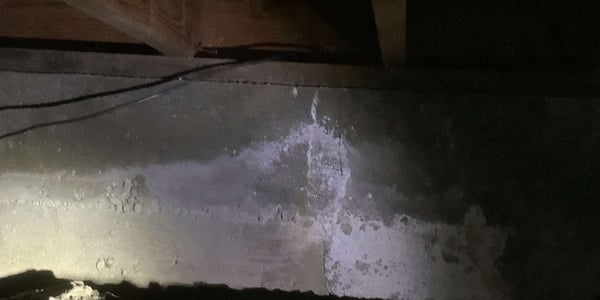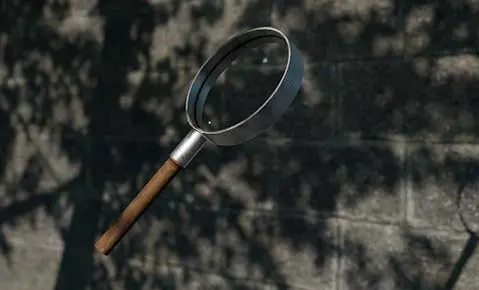Can efflorescence comprise the structural integrity of your home? And what exactly is that salty, alkaline substance crusted onto your stucco walls and foundation footing anyway? If you’re concerned about efflorescence eating into your foundation or concrete patio, this article is for you.
Dalinghaus Construction Inc. has over 100 years of combined foundation repair experience. We’ve seen our fair share of efflorescence crystals chalking up stem walls and brick chimneys. We know the best ways of dealing with recurring bouts of efflorescence.
This article covers the efflorescence definition, the chemical process, and answers the question does efflorescence pose a serious threat to your overall foundational health. By the end of this article, you will know where efflorescence is commonly found and how to remove it.
So, let’s dive in.

What is Efflorescence and Can it Damage Your Foundation?
Efflorescence is the deposit of crystalline salts on concrete, stucco, brick, and other surfaces and is produced from weathering/chemical reactions involving moisture. Efflorescence tends to have a white hue, much like salt, and a sand, gritty texture. Efflorescence is commonly found on stem walls in crawlspace foundations due primarily to improper drainage and poor ventilation.
The Efflorescence Process
Efflorescence is a chemical process whereby water-soluble salt is pulled from the porous material and crystalizes on the surface. Moisture is the key culprit – a busted underground sprinkler system, rainwater, or melting snow. In short, water attracts salt.
Note – colder climates are more susceptible to efflorescence primarily due to the application of calcium chloride to expedite the curing of concrete.
Efflorescence is commonly found on:
- Slab on grade foundation footings
- Concrete patios and sidewalks
- Chimneys
- Stucco walls
- Stem walls
Here at Dalinghaus Construction Inc., we most commonly see efflorescence in crawlspaces on stem walls and old pads. Efflorescence, in and of itself, does not necessarily pose a threat to you or your home’s foundation; however, when accompanied by other signs and symptoms it should be seriously evaluated.
Other signs and symptoms to look out for:
- Mold and mildew in your crawlspace
- A musty/damp scent
- Heavily layered efflorescence
- Cracked stem walls/exposed rebar
- Spalling
- Sloping Floors
- Sticking doors or windows
Excess moisture is always a threat to your foundation. Cracked stem walls are a serious issue and are compounded by exposed rebar. Exposed rebar rusts, expands, and can break off chunks of your foundation’s footing. Cracked stem walls and exposed rebar are repaired with carbon fiber wraps, which mitigate further moisture damage.
The best ways to remove efflorescence:
- Scrub with a stiff brush (and a vinegar/water solution)
- Use a power washer
- Utilize chemical agents (with caution)
Even when removed, it is common for efflorescence to return if the source of the excess moisture has not been addressed.
Can Efflorescence Damage Your Foundation?
In short, efflorescence is rarely indicative of serious structural damage to your foundation. It poses no serious threat to the overall health of your foundation; however, the excess moisture that is causing the efflorescence breakout may be problematic.
In this article, you learned the definition of efflorescence, understand the chemical process, and know it poses no real danger to the structural integrity of your foundation. Dalinghaus Construction Inc. has helped hundreds of homeowners with their foundation repairs.
If you have efflorescence in your crawlspace and notice cracks fractured across your stem walls, read our article Structural Carbon Fiber – Foundation Repair for Cracked Footings (7 Steps) to learn the best ways to address your cracked foundation.
Or, if you noticed you have rotten posts and efflorescence caked on your concrete pads, read our article Crawlspace Jacks (Installation & Cost) to learn how much it will cost to replace your posts and pads.
If you live in Southern California or Arizona and you’re ready to book a foundation inspection now, click on the button below.







3 Responses
Thanks for sharing work espertise with us, we have glad to knew about the valuable information
Thank you for explaining that the excess moisture may damage your foundation. My friend told me that their house needs salt damp inspection. I should advise him to turn to an expert in salt damp inspection to obtain reliable results.
Thanks for helping me understand that efflorescence would return if there is still excess moisture in the area that is not addressed. It seems like getting a stone tile calcium removal should be accompanied by other procedures to get to the root cause of it. Doing so will prevent the issues from coming back to one’s property.